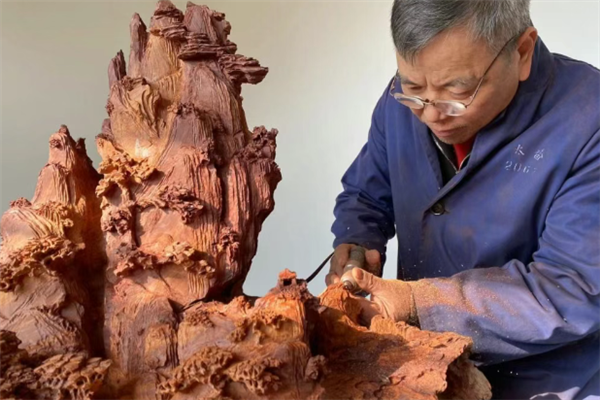Huangjing rosewood carving craft: A century-old legacy
Huangjing town, Taicang, Jiangsu province, is home to the century-old craft of rosewood carving, which has been honored as a Suzhou municipal-level intangible cultural heritage item.

A rosewood artwork depicts children playing around an elephant. [Photo/WeChat account: tcsrmtzx]
This traditional skill originates from Wang Rongsi, a carpenter and architect in the Qing Dynasty (1644-1911) from Xiangshan, which is located in today's Wujiang district of Suzhou. Wang's descendants passed down the craft, and it eventually took root in Huangjing.
During the 1960s to 1980s, Huangjing's rosewood industry thrived. Craftsman Wang Siming opened a rosewood factory in Huangjing, where he secured foreign trade orders and crafted exquisite furniture that was exported to South-eastern Asia, the United States, and Australia.
Then, factories sprang up one after another, producing not only furniture but also artifacts and folk musical instruments, earning Huangjing a reputation as a rosewood town.

Zhao Huibin carves rosewood. [Photo/WeChat account: tcsrmtzx]
However, the factories went bust in the 1990s when new types of decoration materials flooded the market and young people lost interest in traditional furniture.
But woodcarvers like Zhao Huibin kept the tradition alive. Zhao, who learned the craft from his grandfather and uncle, returned to carving after a hiatus and won a bronze medal at the 2020 China (Suzhou) Fine Arts and Crafts Exposition.
Huangjing is reviving its rosewood carving heritage through exhibitions to promote the craft and by opening carving interest classes in schools.
For example, in 2021, a Suzhou-style rosewood museum opened its doors in Yanyue Lake Wetland Park, and over 30 esteemed works by Zhao and other local craftsmen were moved in.









